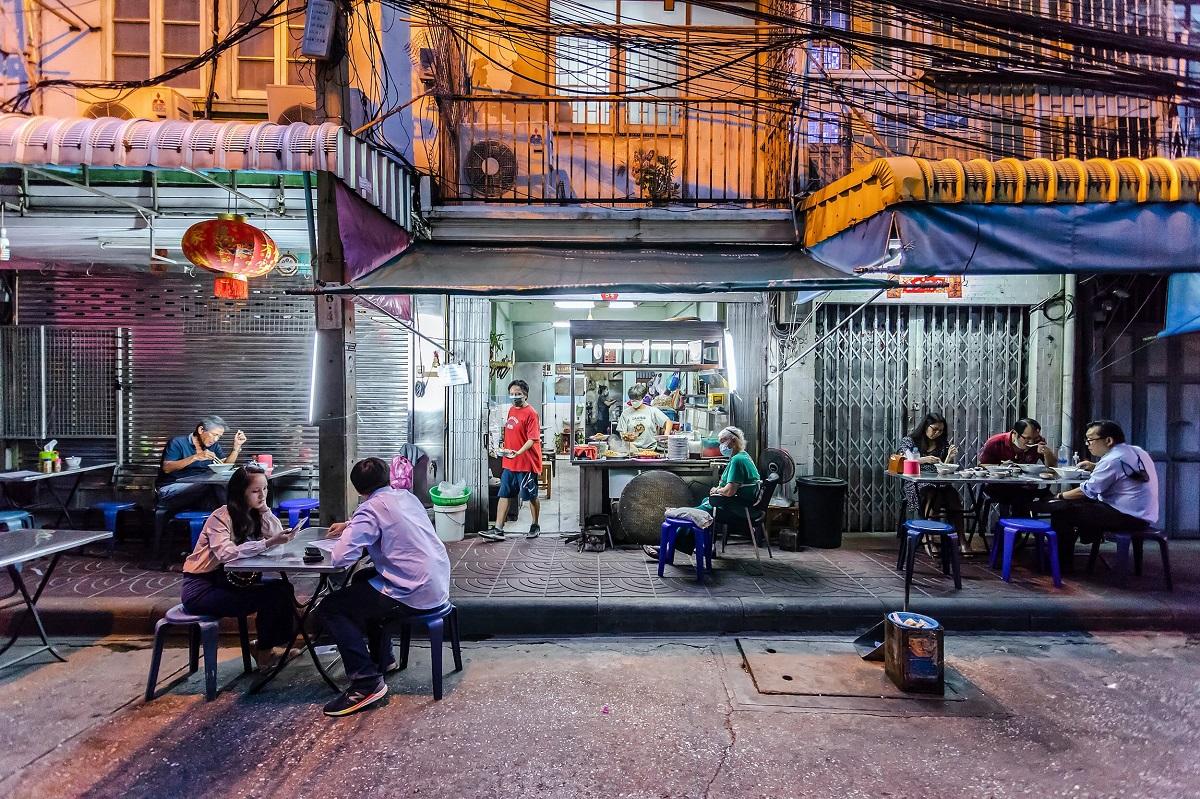Asia delivers a remarkable array of street foods, showcasing an enticing blend of flavors and culinary traditions. This vast region encompasses diverse landscapes, from equatorial tropics to majestic mountain ranges, volcanic islands and active megacities. The rich tapestry of cultures and histories contributes to a vibrant street food scene.
Here you’ll discover not only local specialties but also dishes that have journeyed across borders, adapting and evolving along the way. Centuries of migration and trade have created a culinary melting pot, with recipes that often transcend their origins to become beloved favorites in entirely different locales.
To honor this dynamic food culture, we will explore some of the top street foods to try in Asia. While this list is just a starting point, it reflects the extraordinary food traditions that await discovery across Asia.
Please Download Our Mobile App here
Cheong fun, Hong Kong
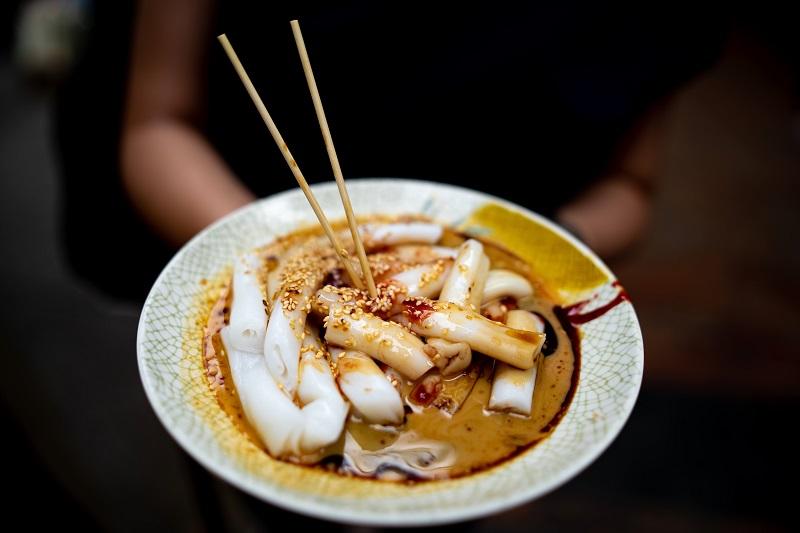
When exploring the vibrant street food scene in Asia, one dish that stands out is cheong fun, particularly popular in Hong Kong. Despite its somewhat misleading name, which translates to “intestine noodles,” this delicacy does not contain any entrails. Instead, the name refers to the dish’s tubular shape, adding a unique flair to its presentation.
Cheong fun consists of thin, translucent rice rolls that are expertly steamed and then folded. These rolls can be filled with various savory ingredients, such as char siu (Chinese barbecued pork), dried shrimp, beef or an array of fresh vegetables. One of the delights of cheong fun is its versatility, allowing it to cater to different tastes and preferences.
To elevate the dish further, several sauces are typically served alongside it, including soy sauce, hoisin sauce, peanut sauce and chili sauce creating a harmonious blend of flavors. A sprinkle of sesame seeds adds an extra crunch and nutty aroma, making it a truly satisfying snack or meal. Whether enjoyed as a quick street food bite or as part of a dim sum feast, cheong fun is a must-try for anyone looking to experience the rich culinary culture of Hong Kong.
Bubble tea, Taiwan
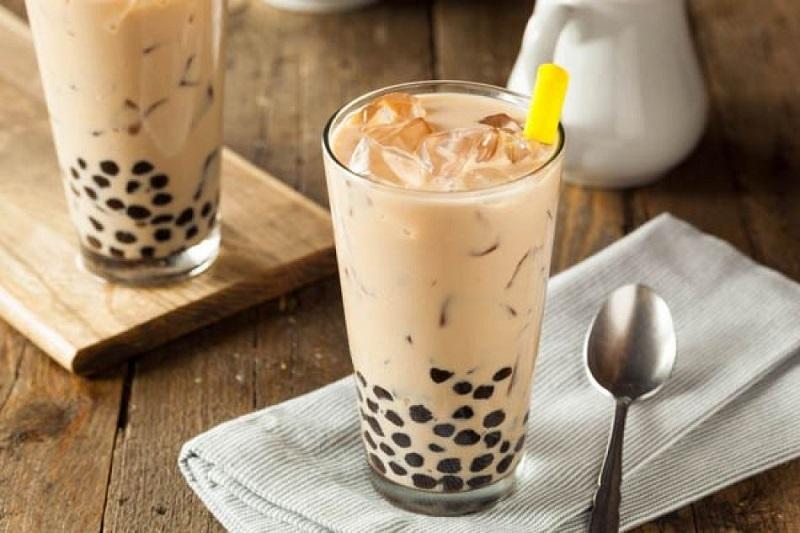
When exploring the vibrant street food scene in Asia, one iconic treat that stands out is bubble tea, also known as boba or pearl milk tea. No visit to Taiwan would be complete without indulging in at least one cup of this beloved beverage. Originating in Taiwan during the 1980s, bubble tea has evolved into a cultural phenomenon.
The classic recipe features a rich and silky blend of shaken green or black tea, complemented by generous servings of chewy black tapioca balls. These tapioca pearls, which provide a unique texture, require a special wide straw for the full experience. Today, bubble tea vendors are known for their creativity, offering an impressive array of imaginative flavors such as Oreo, sweet potato, matcha and kumquat.
Many vendors also cater to personal preferences, allowing customers to customize their drinks by adjusting the levels of sugar and ice. This customization ensures that each bubble tea experience can be tailored to individual tastes, making it a versatile and exciting option for street food enthusiasts.
Achcharu, Sri Lanka
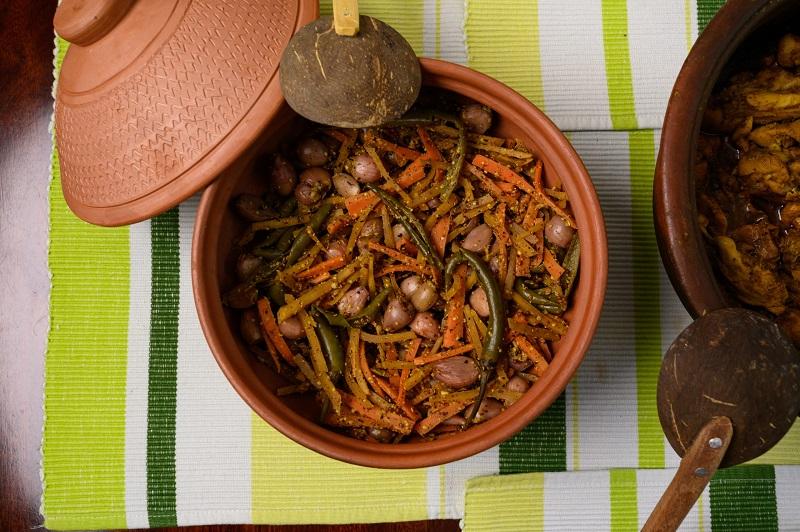
Achcharu is a unique combination of sweet, sour, and spicy flavors, crafted from an array of seasonal fruits and vegetables. This dish embodies the essence of Sri Lankan cuisine, making it an ideal street food snack for those seeking bold and diverse flavors. The preparation of achcharu involves marinating fresh ingredients in a mix of local spices, including chili, turmeric, sugar, and salt.
Each region of Sri Lanka may offer its own variations, showcasing the rich agricultural bounty and cultural influences of the area. Common ingredients include Ceylon olives (veralu), wood apple, pineapple, ambarella, mango, jackfruit and even eggplant, providing a medley of textures and tastes. The combination of these ingredients results in a refreshing and tangy snack that is not only delicious but also offers a glimpse into Sri Lanka’s culinary heritage.
Whether enjoyed on the bustling streets of Colombo or at local markets, achcharu is a must-try street food that captures the spirit of Sri Lankan cuisine. The interplay of flavors in this dish reflects the country’s diverse cultural influences, making it a perfect representation of the island’s vibrant food scene.
Banh mi, Vietnam
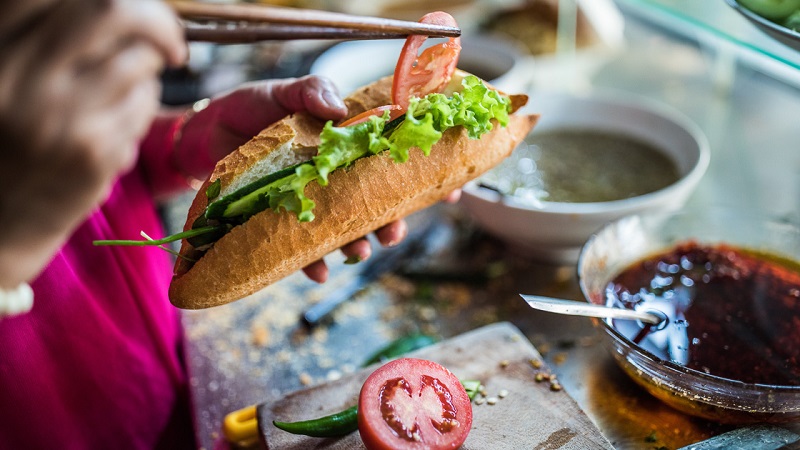
Although the French introduced baguettes to Vietnam during their colonial period, the banh mi has evolved into a uniquely Vietnamese creation that showcases the country’s culinary ingenuity. This delicious sandwich is a perfect example of the rich tapestry of flavors and textures that Vietnamese cuisine offers. Banh mi is characterized by its crispy, fluffy baguette, which serves as the perfect vessel for a variety of fillings.
While recipes can vary significantly from north to south and east to west in Vietnam. A classic banh mi often features succulent pork, pickled vegetables, fresh coriander and a hint of chili for spice. One of the standout elements of this sandwich is a generous smear of pâté, which adds a rich and creamy dimension to the overall flavor.
The beauty of banh mi lies in its adaptability; street vendors often put their own spin on the traditional recipe. This offers variations that may include chicken, tofu, or seafood, catering to different tastes and dietary preferences.
Fuchka, Bangladesh
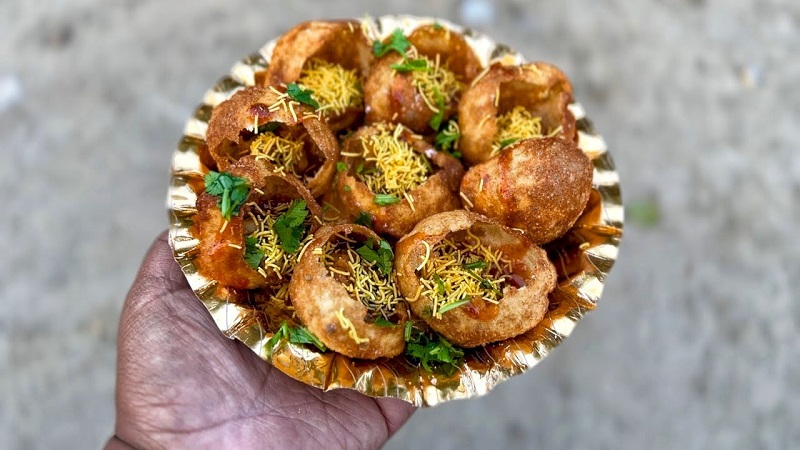
This enticing snack embodies a delightful blend of flavors, combining sweet, sour and spicy elements that create a unique culinary experience. Fuchka consists of crispy, hollow spheres that serve as edible shells, typically filled with a savory mixture of mashed potatoes and chickpeas.
This filling is enhanced with freshly chopped onions, cucumber, lime, coriander and green chilies all seasoned with a zesty chaat masala blend that amplifies its taste. One of the appealing aspects of fuchka is the presentation. Vendors often garnish the dish with grated boiled eggs, adding a creamy texture that balances the crunchy shell and spicy filling.
To complete the experience, a small cup of tamarind water sauce is provided, allowing you to pour this tangy liquid into the shells just before indulging. The combination of flavors, along with the delightful crunch of the shells, creates an enticing explosion of taste in every bite, making fuchka a quintessential street food experience that captures the essence of Bangladesh’s rich culinary heritage.
Conclusion
Exploring the street food scene in Asia offers a vibrant tapestry of flavors and culinary traditions that reflect the rich cultural diversity of the region. Embracing these street foods is about experiencing the heart and soul of Asia through its most beloved culinary treasures.
